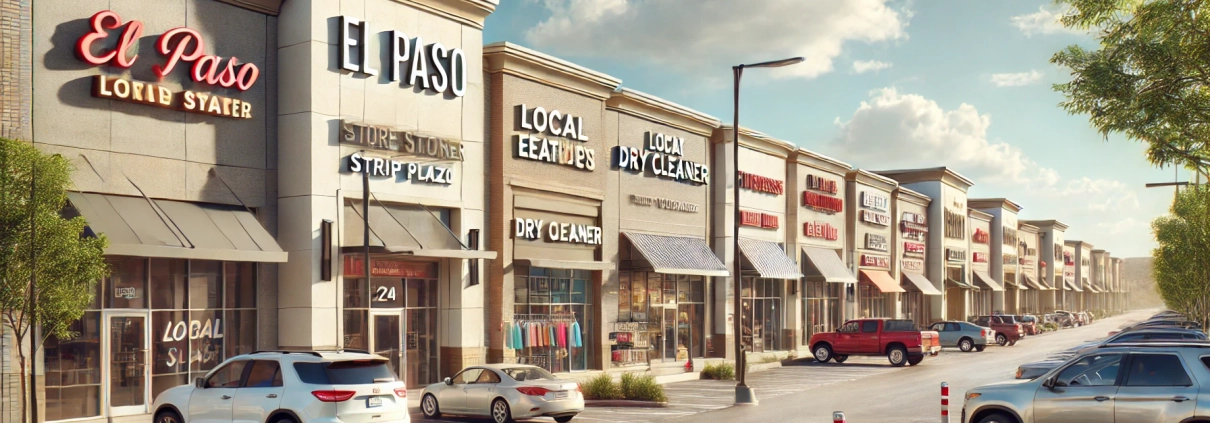Discount Rate
In commercial real estate, the discount rate represents the rate of return used to convert future cash flows into their present value. It reflects the risk and opportunity cost associated with a particular investment. Typically used in discounted cash flow (DCF) analysis, the discount rate accounts for factors such as the time value of money, market conditions, the asset’s risk profile, and investor return expectations. A higher discount rate indicates a higher perceived risk, resulting in a lower present value of future cash flows. Conversely, a lower discount rate suggests lower risk and higher present value.
Put another way, the discount rate is the target return an investor seeks for a future string of cash flows, given the risk and uncertainty of those cash flows.
Putting ‘Discount Rate’ in Context
Rio Bravo Capital Partners, a real estate private equity firm, is evaluating the acquisition of Suncrest Retail Plaza, a 28,000-square-foot unanchored strip retail center located in El Paso, Texas. The property has eight tenants, ranging from local eateries to service-based businesses like a dry cleaner and a fitness studio. While the retail plaza is in a well-trafficked area, it faces competition from larger, anchored shopping centers nearby, and some leases are approaching renewal in the next 24 months.
The Core-Plus Strategy
Since Suncrest Retail Plaza is largely stabilized but offers moderate risk in the form of lease expirations and market competition, Rio Bravo Capital sees this as a Core-Plus acquisition opportunity. Their plan is to acquire the property and potentially re-tenant two upcoming vacancies, while also negotiating better lease terms with existing tenants. This strategy represents a balance of risk and stability, aligning with their investment criteria for Core-Plus properties.
Applying the Discount Rate
To determine how much Rio Bravo Capital should pay for the property, they need to calculate the present value of expected future cash flows from Suncrest Retail Plaza. In their discounted cash flow (DCF) analysis, they project annual net operating income (NOI) of $600,000 over the next 10 years. However, since this income isn’t guaranteed—given potential vacancies and the need to renew leases—they must account for the risks by applying a discount rate.
Discount Rate Selection
Rio Bravo Capital applies a discount rate of 9% to their analysis. This rate reflects the risk associated with this particular investment: while the property is stabilized, it isn’t fully risk-free, given the lease rollover risks and the potential competition in the market. The 9% discount rate factors in:
- Time value of money: Future cash flows are worth less in today’s terms due to inflation and opportunity costs.
- Market risk: The El Paso retail market is stable, but with some competition, which adds uncertainty to future cash flows.
- Property-specific risk: Lease expirations could lead to temporary vacancies or the need for tenant improvements and leasing commissions to secure new tenants.
The Calculation
Using the projected NOI of $600,000 per year and the 9% discount rate, Rio Bravo Capital calculates the present value of Suncrest Retail Plaza’s cash flows over a 10-year holding period. They use the Present Value of an Annuity formula to discount these future cash flows:
PV = NOI × ( (1 – (1 + r)-n) / r )
Where:
- NOI is $600,000,
- r = 0.09 (9% discount rate),
- n = 10 (10-year holding period).
Applying the formula:
PV = 600,000 × ( (1 – (1 + 0.09)-10) / 0.09 ) ≈ 600,000 × 6.4176 = 3,850,560
Thus, the present value of the future cash flows is approximately $3.85 million. This serves as a baseline for what Rio Bravo Capital would be willing to pay for the property.
Conclusion
In this hypothetical scenario, the discount rate was crucial in determining the appropriate price for Suncrest Retail Plaza. A higher discount rate would have resulted in a lower present value, reflecting increased risk, while a lower discount rate would imply a higher price and lower perceived risk. By choosing a 9% rate, Rio Bravo Capital accounts for the Core-Plus nature of the investment, balancing moderate risk with the opportunity for stable returns.
Frequently Asked Questions about Discount Rate in Commercial Real Estate
What is a discount rate in commercial real estate?
The discount rate represents the rate of return used to convert future cash flows into their present value. It accounts for the time value of money, investment risk, market conditions, and opportunity cost.
Why is the discount rate important in property valuation?
It allows investors to assess how much a property’s future income is worth today, considering the associated risks. A higher discount rate results in a lower present value, indicating higher perceived risk.
How is the discount rate selected?
It depends on factors such as property-specific risks, market conditions, investor expectations, and deal strategy. For example, in the Suncrest Retail Plaza case, Rio Bravo Capital selected a 9% rate due to lease rollover risk and market competition.
How do you calculate present value using a discount rate?
Using the Present Value of an Annuity formula:
PV = NOI × ((1 – (1 + r)-n) / r)
For Suncrest Retail Plaza, PV = 600,000 × 6.4176 = $3,850,560 with a 9% discount rate over 10 years.
What happens if the discount rate increases or decreases?
An increase in the discount rate lowers the present value of future cash flows, reflecting greater risk. A decrease increases the present value, indicating lower risk and greater confidence in the income stream.
Is the discount rate the same as the cap rate?
No. The cap rate is used in direct capitalization and reflects market yield on stabilized income. The discount rate is used in DCF analysis to reflect the investor’s required return for future, potentially variable cash flows.
Click here to get this CRE Glossary in an eBook (PDF) format.

